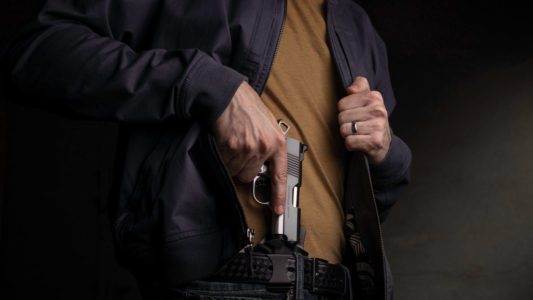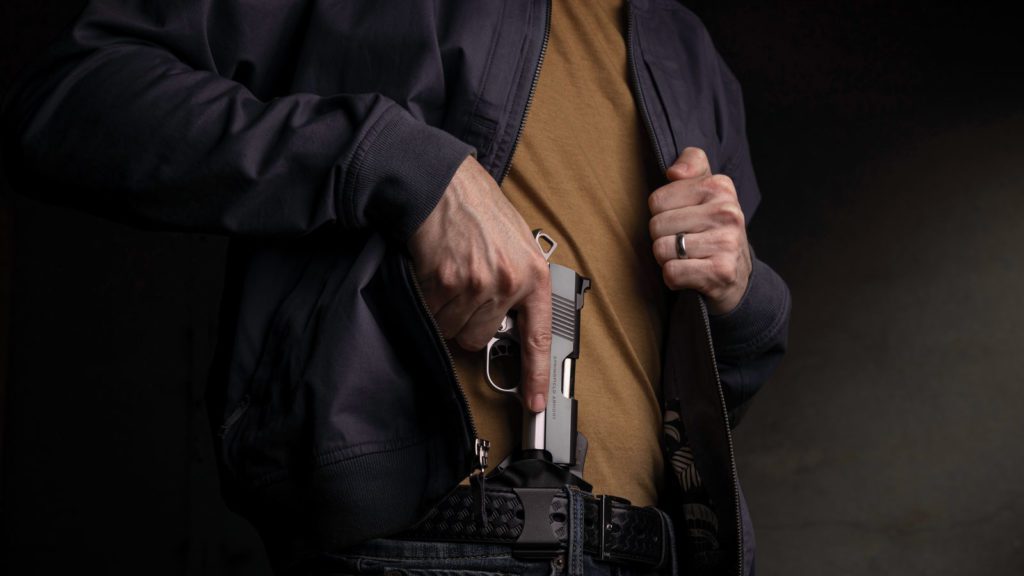
New concealed carry customers need your help. Give it to them.
Help on the Way
New concealed carry customers need your help. Give it to them.
Over the past couple of years, millions of new gun owners have entered our space. Many of these purchases were spurred by well-founded concerns for personal safety. And of these millions, a sizable chunk desire to carry a concealed firearm. That’s why in this issue you will see a pronounced focus on concealed carry.
Logan Metesh, who wrote “Trends in Concealed Carry” (related story), provides a succinct look at a number of developing trends, including interest in larger calibers and appendix-carry holsters, among others.
Mia Astine, who wrote “Choosing a Concealed Carry Firearm for Women” (related story), delivers valuable insights into this increasingly important market segment. She tackles an age-old question first: revolver or semi-auto? In answer to this, she discusses grip, operation, caliber and controllability, and comfort. Of the four, comfort is a vital consideration. “If they aren't comfortable with their gun, they won't train with it; and if they won't train with it, they won't gain the necessary expertise to be a confident, competent, and safe shooter,” she says.
The other considerations involve a series of tradeoffs. Here’s one example. “Choosing a larger caliber will increase stopping power when shooting a threat; smaller-caliber guns won't create as much ballistic damage when they hit the target. As you see, your customer needs to realize there will be tradeoffs. They'll need to decide what is important: size, stopping power, recoil management, and the ability to conceal the gun.”
And then there is the question of ammo. As author Travis Pike says (related story), “When shopping for handgun ammo, your customer will be confronted with a wide variety of bullet weights. This occurs with every caliber and can be very confusing. For example, if you start shopping for 9mm hollow points, you’ll see three common weights: 115 grain, 124 grain, and 147 grain, which might leave you asking which one is the best for self-defense.
“Each one could be the right answer, but it really depends on your customer’s gun. Part of proper penetration and expansion depends on the velocity of the round. Heavier rounds move slower, and longer barrels help the rounds move faster. If you are going to fire a heavier round, it’s often better to fire it from a longer barrel to ensure it reaches the right velocity to properly penetrate and expand.”
Pike also notes that bullet weight can also have a slight effect on recoil. It can be almost imperceptible, but it might be something worth considering for those who are recoil sensitive.
One point of emphasis here is to keep in mind that self-defense ammo is purpose-built to be as effective as possible when used in a self-defense situation. High-quality self-defense ammo is designed to maximize reliability to ensure it will always fire when you pull the trigger. It costs more, yes, but cheap ammo in this case is a foolish purchase.
It doesn’t take much to find good defensive ammo these days, though there is admittedly a sea of it out there vying for the attention and the purchase power of consumers. And that’s why knowledgeable dealers are so critical to the process.

New concealed carry customers need your help. Give it to them.
